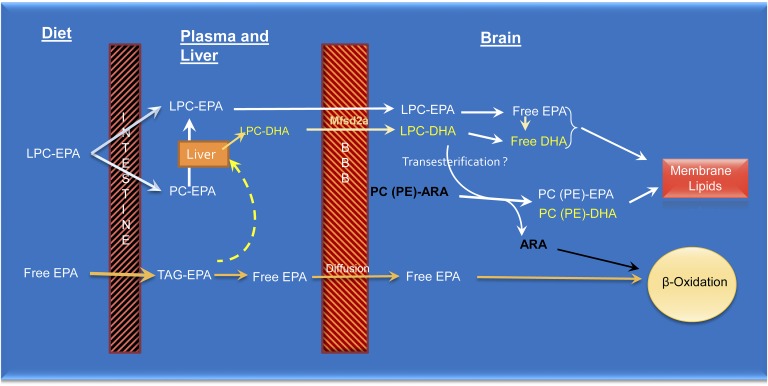Fig. 8.
Proposed mechanisms for the differential effects of free EPA and LPC-EPA. Whereas free EPA (as well as EPA from fish oil and krill oil) is absorbed as TAG, LPC-EPA is absorbed as PC or LPC. The liver secretes more LPC-EPA and LPC-DHA after the uptake of phospholipid-EPA than after the uptake of TAG-EPA. The sodium-dependent symporter at the blood-brain barrier (Mfsd2a) facilitates the uptake of LPC-EPA and LPC-DHA by the brain. Part of the EPA taken up by the brain through this pathway is converted to DHA, and both EPA and DHA are incorporated into membrane lipids. LPC-EPA (and LPC-DHA) may also take part in transesterification reactions with endogenous ARA-containing phospholipids, resulting in the displacement of ARA and its subsequent oxidation of the latter by the β-oxidation pathway. This accounts for the loss of ARA after feeding EPA. In contrast to LPC-EPA, the free EPA generated in the plasma is taken up by diffusion and enters a different metabolic pool where it is preferentially oxidized by the β-oxidation pathway (10, 11) and, therefore, does not accumulate in the brain membranes.

